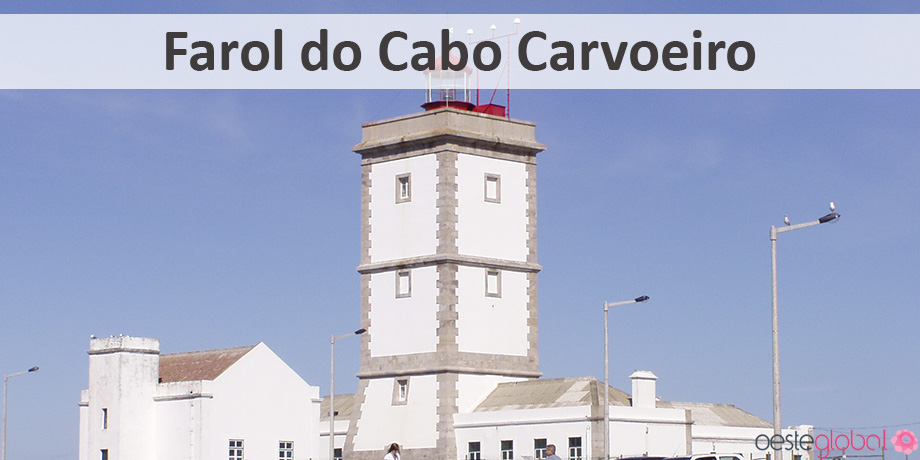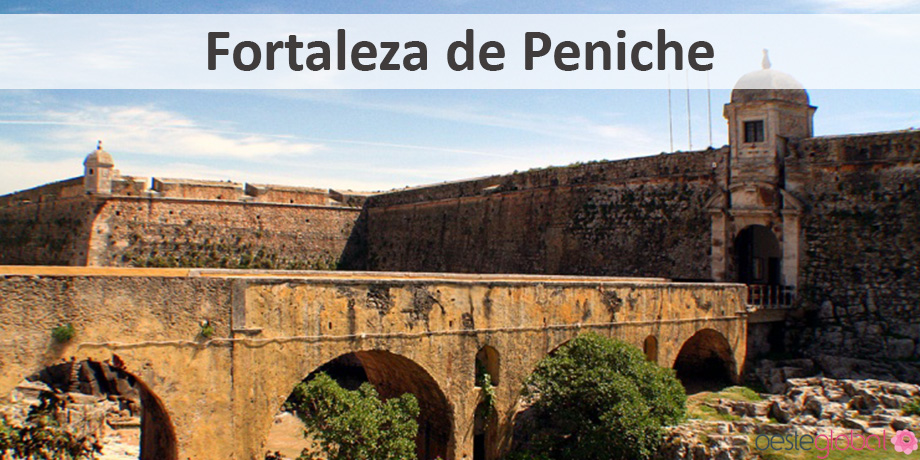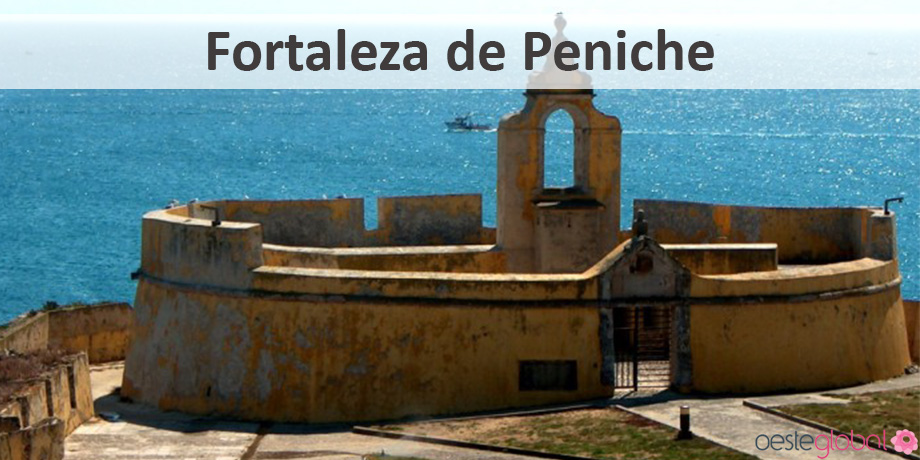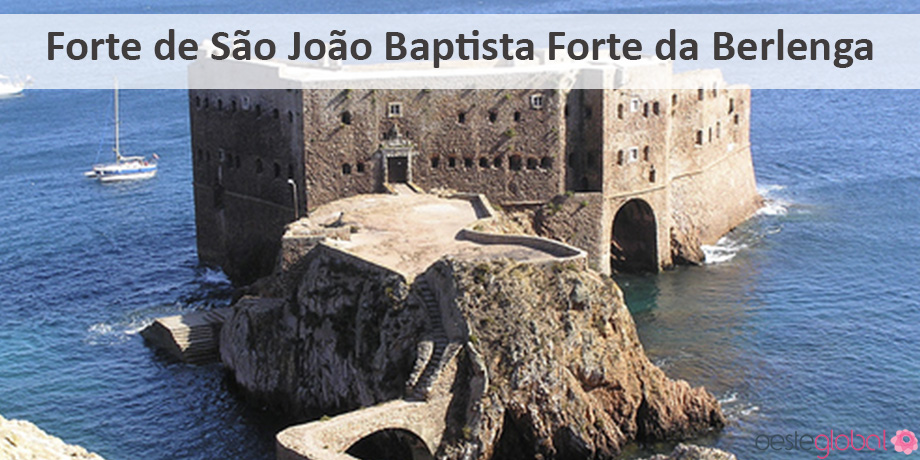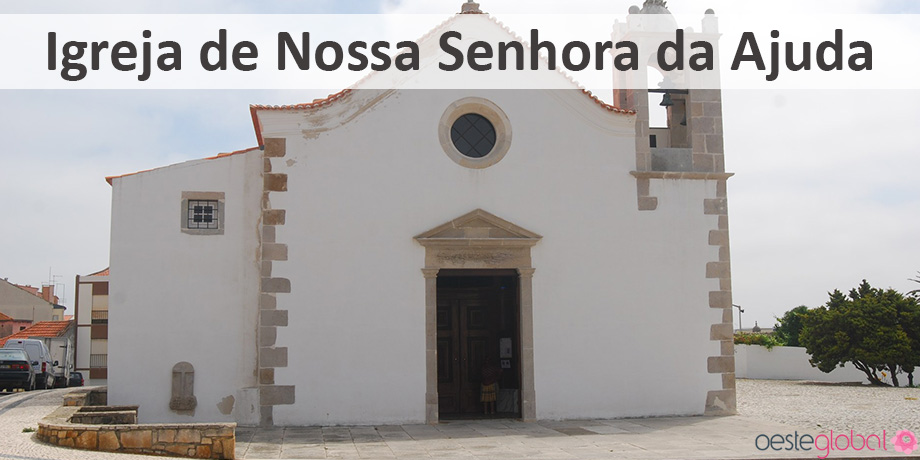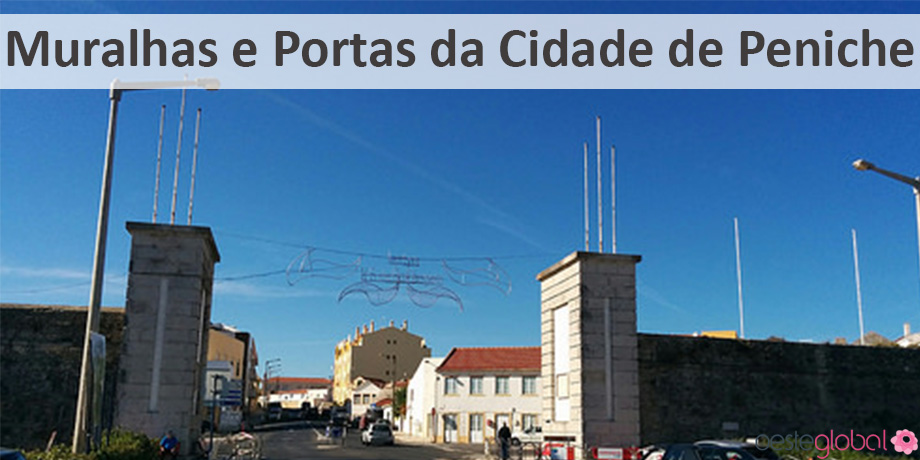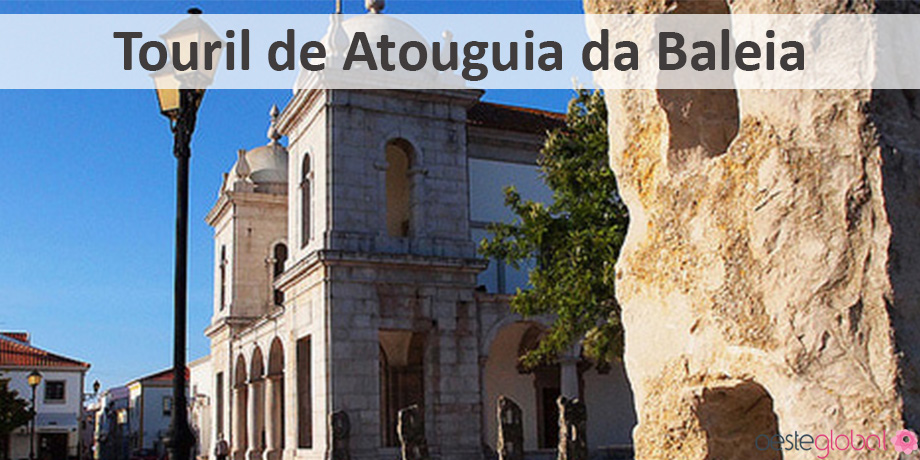Heritage in Peniche
The Peniche county offers a variety of historical and cultural heritage, which together with the traditions and customs lived in Peniche. Currently, Peniche is recognized as Capital Wave, due to its characteristics for surfing and the world event surf. – Rip Curl Pro From a fishing village, Peniche has evolved into a modern city whose offer meets the surf lovers , interested in the history of fishing and all related activities.
O Municipal Museum is the Fortress of Peniche, was sent build in 1557 by King John III, and concluding by John IV in 1645, and in 1938 was considered as a National Monument. The Peniche Fortress was used in various ways over the years since military court in 1897; shelter for refugee Boers, from South Africa, in the early twentieth century; during the 1st World War, welcomed German and Austrian prisoners; Prison Policy was during Salazar’s order, between 1934 and 1974; this year, also welcomed Portuguese families who arrived colonies of Overseas; and in 1984, it housed the Municipal Museum until the present day. Possessing ten thousand pieces, and most of these are on permanent display. This museum features collections relating to prehistory, Underwater Archaeology, Fisheries and Shipbuilding, Architect Paulino Montês, Peniche Memories, Bobbin Lace and Antifascist Resistance.
Built heritage
Peniche Fortress – during the Middle Ages until the early fifteenth century, the island at the mouth of the São Domingos would found the town of Atouguia, an important cluster in the region. However, from the century of Four, with the gradual silting up of the river channel between Peniche and Atouguia, and in 1438, it was founded the port of Peniche, the mandate of Duarte. With the development of this new harbor, along the XV century, the Crown noted the need to erect a fortification to protect the village. A project initiated by King John III, starting with a castle or fortress, the Peniche peninsula. Although the interest in building the fortress has only emerged in the first half of the sixteenth century, the bulwark of the project moved forward only in 1557, with D. Luis de Ataide responsible for the work, being completed a year later – this event is seen in the inscription above the door to Baluarte Redondo. Only 1589, the architect of the Crown Filippo Terzi, continued construction of the fortress, since, with the departure of Don Luis de Ataide to India, the works were discontinued in 1567. However, this fortification was completed in the middle of XVII century, during the Restoration period, when the Crown redesigned defensive system of the coast. Therefore, in 1642, there was the beginning of a work of expansion of fortification, with an irregular star-plant, bounded by walls with polygonal bastions and a second defensive line. In 1645, this work would be completed. The fortress would continue to play an important role in the line of defense of the Atlantic coast over the centuries, it is fundamental in the French Invasions and the Liberal Wars.
Rosary Foutain – one of the most important supply points of water from the city of Peniche, as the population has always struggled with water shortages. Unknown to their actual origin, there is a possibility that has been built in the sixteenth century, a time that saw improvements throughout the country, in capturing, conduction and water supply to the most deprived populations. Due to an inscription in the arch of access to the interior of the set, it is recognized that this power has been restored in the first half of the eighteenth century. This it is a source of deep diving such, which required the construction of a ramp with a sharp slope. Subsequently, the slope of this ramp was attenuated through four steps to the entrance courtyard, which surrounds the source. The quadrangle is vaulted with a sufficiently wide so that the old cars could do a U-turn and go up the ramp to return to the village, which supplied the houses and many urbanites establishments.
Atouguia da Baleia Castle – with the progressive silting of the river of Santo Domingo, the town of Atouguia da Baleia dispose of a castle overlooking an important port due to its sheltered position on the ocean. With its natural conditions, Atouguia was elected as medial county seat during the twelfth century. In 1158, the “Homestead Tougia” came into the possession of King William of Cornibus, who assisted D. Afonso Henriques during the achievements of 1147. From this donation and settlement efforts and organization of the territory, which rose this Castle. Forty years later, at the time Sancho I passed a new law, this castle was mentioned, as well as the need to add watchmen, scattered throughout the county to improve the defensive system. It is unknown how it would have been the primitive structure of the castle, being supposed that the remaining structures were subsequent to the twelfth century. Thus, it is assumed that the fortress adapt romantic assumptions, with a fence to enclose the inner courtyard and in the center, in isolation, rose a donjon. Currently, the fortress is represented by a wall portion of the oval extension, strengthened by a rectangular tower, the Northwest. In the sixteenth century, John III ordered it started the restoration process, a time when the Portuguese coast was being threatened by pirates and privateers. D. Luis de Ataide recognized the secondary value of the fortress, benefiting the port and the castle of Peniche, which transferred real money. Thus, we initiated the power transfer process to Peniche, and continued in 1759, when the Marquis of Pombal ordered to run the Count of Atouguia, by participatory supposedly in an attempt to murder of Joseph. The November 6, 1836, the municipality Atouguia da Baleia was extinguished. During this period, the castle and the defensive system of Atouguia da Baleia no way had any type of recovery or rehabilitation works and their land were privatized or conquered by silts of the Santo Domingo river.
Chapel of Our Lady of Guia – one Mannerist chapel, the late seventeenth century. Its façade with a portal and rectangular windows, surmounted by a contracurvada gable adorned with pinnacles in acrotérios, accompanied by a bell tower adjoining the north. But the interior is composed of a nave with wood and barrel vault in the chancel. In the main altar is to highlight the altarpiece and two side altars in gilt, a national style. This interior space is characterized by the colors and set design of decorative elements, resulting in an eighteenth-century campaign.
Atouguia da Baleia cruise – located in the village of Coimbrã, this cruise is one of the heritage landmarks of interest of the old Atouguia term whale. This is an inscription that refers to its creator, an important man in the village Atouguia, in the early sixteenth century, “DEVOTION SENT FOR YOUR SHORE ANTONIO DO THE YEAR 1525”. A work composed of two parts, the cruise along with a small temple, which protects. His cross is on a cylindrical shaft and vegetal capital, which is inscribed the epigraphic caption celebration of its construction.
Lighthouse Cape Carvoeiro – located at Cape Carvoeiro, this square tower lighthouse 27 meters tall has a range of 15 miles. This was sent to build, together with other headlights at 1758 pombalino Charter, which later founded the Service and Lighthouses in Portugal. Starting running in 1790, this lighthouse is one of the oldest of the Portuguese coast. Currently, this site works DGPS station Carvoeiro, founded in December 2002, on the frequency 311.5 kHz.
Fort Consolação Beach – located in Atouguia da Baleia, it was founded in 1641 by D. Jerónimo de Athayde, Atouguia Conde and Lordship of Peniche. The purpose of fortification was to strengthen the defense line of Peniche cove and can cross fire with the fortress of the village. The construction work of this fortification ended in 1645, and years later, in 1665, the platform structure was expanded. However, with the great earthquake of 1755, the drum part that was facing the sea, eventually crumble. In the early nineteenth century, this fort suffered once more expansion work, as in 1800 was inserted a battery that stand about 15 canhoeiras for the defense of the cove. Fortification of Consolation Beach develops in planimetry starry having four triangular bastions and five platforms where were the mouths of fire-and is surrounded by a moat, to which the access is by a bridge. In 1947, the fortress was disabled military functions, being occupied by a holiday camp and in 1974, was installed the headquarters of the Recreational Association Forte Club of Consolation.
São João Baptista Fort/ Berlenga Fort – in the early sixteenth century, the Berlenga Island was occupied by a community of jerónimos monks who built the monastery of Mercy Berlenga, in order to assist the shipwrecked. However, with the Corsican attacks away these brothers of the island, and in the seventeenth century, D. João IV sends erect a fortress on this island, aiming to strengthen the protection of Peniche citadel. Thus, the Fort of St. John the Baptist was built on a small island, connected to the island by a masonry bridge, an engineer Mateus Couto project. In the year 1666, with the attack of a Spanish squadron, which aimed to kidnap Queen Maria Francisca of Savoy upon arrival in Portugal at the time of her marriage to Alfonso VI, the construction of Fort Berlenga was stopped. During the French invasion, this fort served as a base for British troops, after being ravaged by the French. In 1821, D. João VI ordered the restoration of the fortress they built the chapel destroyed by the French. During the Liberal Wars, the fort served as a base for troops of Pedro for the conquest of Peniche fortress, which had been occupied by miguelistas troops. After 14 years, Fort Berlenga was desartilhado and was gradually abandoned. In the twentieth century, in the 50s, the Fortress of St. John the Baptist was restored by the General Directorate for National Buildings and Monuments, and later adapted to the room for the inn.
Tribute to Rendilheira – the city of Peniche is strongly related to the incomes of Bilro since the seventeenth century. It is celebrated the day of Rendilheira.
Tribute to the Men of the Sea – a statue created to honor fellow Peniche who have dedicated their lives to the sea.
Church of Our Lady of Remedies – relatively close to Cape Carvoeiro, this building comes from the seventeenth century, according to tradition was built where he found an image of Our Lady, hidden in a cave, which formerly existed on the site, from this moment began the worship of the Lady of Medicines. Years later, with the annual pilgrimages that took place at that location, there is a need to build the chapel. In this you can find tiles that illustrate episodes Virgin’s life. Outside the chapel, there is a border square with the houses that remained the hermit and the butlers, the inns and stables. In 1996, this chapel was considered Public Interest by former IGESPAR, IPPAR. Every year in October takes place a pilgrimage.
Misericordia Church Peniche –this dates back to the sixteenth century, attached to the old hospital of the Santa Casa da Misericordia de Peniche. This has a ship decorated with tile panels of the sixteenth century, the Gospel event of oil painting and 55 coffered painted ceiling alluding to scenes from the New Testament Book of Acts and Revelation. it is still possible to observe the tomb of Don Luis de Ataide – 3rd Earl of Atouguia da Baleia and Viceroy of India. This church was considered as a Public Interest.
Church of Our Lady of Help – one of the three most interesting Baroque churches in Peniche, being composed by the Church of Our Lady of Conception, the church of Our Lady of Remedies and the church of Our Lady of Help. This is within the national church models with a tile panels coating, intertwined with gilt and ceilings paint, however, in this church there is the Virgin and the invocations of the three brotherhoods, Our Lady of Help, the San Pero Gonçalves Telmo and the Blessed Sacrament. Unknown the exact date of its construction, it already existed when the institution of the brotherhood of San Pero Gonçalves Telmo, in 1505. In 1569, an intervention renovation took place, witnessed the bases of the pilasters split the main door. Later, there was the remodeling of the interior of the temple: coated patterned tiles, the ceiling coffins found in the chancel, contains an attribute to Baltazar Gomes Figueira and the altarpiece, was built between 1680 and 1690, with golden in 1706/1707. The current temple comes from an intervention initiated in 1716, with the alms of the faithful, who remodeled especially the interior, which contrasts scenographically with the outside, with a tea architecture. In this period, the ship was increased in order to withstand the high choir, increasing its disproportionate length. The conclusion of these structures occurred in 1719, advancing to the interventions in the side chapels, under the guidance of John Matthew jeweled master. The tile panels lining much of the murários cloths of the temple, with episodes of the Virgin’s life.
Church of Our Lady of Conception – located in Atouguia parish of whale, its construction began on May 10, 1694, ending April 9, 1698, at the behest of the Holy House of Mercy, with its authorship attributed to architect João Antunes. Funding to build the church came the alms of the people and figures of the Portuguese nobility of the sixteenth century, as the Queen Maria Sofia Neuburgo, second wife of Peter II of Portugal. The church is set in a mannerist and baroque building, containing a nave, a chapel, sacristy with two atrium, two quadrangular towers and a porch, accompanying the ship, these spaces are covered by domes. The ship contains a high choir, along with two pulpits, two sinks holy water, with a shell-shaped, and two side altars with altarpieces in polychrome carving. The statue of the Virgin, Our Lady of Conception, is within a canopy. In the sacristy there is a fine chest of black wood, lining the wall, you can also see a fountain with basin and hanger, marble. The church was considered Public Interest by former IGESPAR, IPPAR.
Church of San Leonardo – located in Atouguia da Baleia, this church of Romanesque-Gothic style, was built in the twelfth century. According to tradition, this rose from a Gothic temple and Arab mosque. Outside of this church, you can find the bell tower and a façade with a portal. Although involved with Gothic features also stand out Manueline elements, such as the door of the sacristy, mannerist other elements such as tile flooring and the side chapels. Once inside the church, it highlights the pointed arches and the cylindrical columns. Its roof consists of panels representing Old Testament scenes. According to legend this roof was sustained by the bones of the whale that gave the coast in the sixteenth century, the ratio of change of the village place name. One of his bones is inside the church in a state of petrification. Even inside, there are several pieces of art, like the Nativity low relief, with the front wall, and the manger of the seeps Machado de Castro.
St. Peter’s Church – a construction of the XVI century, in the parish of St. Peter, is a building divided into three parts, two columns and in the middle a narthex with an arch surmounted by a circular oculus. Its bell tower is on the right. But the interior is composed of two side aisles and a central, this the main chapel stands in honor of St. Peter, along with several paintings that reflect some moments of life of the saint. The altars in baroque gilded praise the Lord of Bonfim, Our Lady of Good Voyage and St. Peter of Alcantara. In the sacristy there is a Baroque painting of the Holy Family, originating from the late seventeenth century.
Walls and doors of Peniche City – the city of Peniche is partially surrounded by walls of the sixteenth century. These walls defended the city, along with the Fort of Consolation and the Fort of São João Baptista. However, during the Napoleonic invasion proved to be weak.
Serra Palace d’El Rei (Palace Dom Pedro I) – built by King Pedro I in the mid-fourteenth century, this group played a secondary role in the context of low-medieval royal residences, constantly being forgotten in the work that hung on the royal courts of the end the Middle Ages. In the fifteenth century by the king’s initiative D. Duarte, the palace suffered a partial reform, being coated Gothic style materials. Later, this group was expanded, in practice their spaces were tripled. In the year 1588, after the completion of the palace expansion work was bought by the Counts of Atouguia, becoming his residence. Over the centuries, the village and the palace declined in importance. After the confiscation of the property of the counts, the monument stagnated in neoclassical renovation, degrading with the years.
Pillory Atouguia da Baleia –The Atouguia da Baleia name comes from two different historical periods. This ancient sea port before the silting of the region, was first mentioned in the twelfth century, referring to a town of Tauria – called the large number of wild bulls of this region – that the word of the old Latin originated the toponym of Atouguia. In 1148, D. Afonso Henriques donates Tauria the two French Crusaders, Roberto and William Le Corni, who participated in the conquest of Lisbon. In result of this donation, the first charter comes in 1167, later confirmed by D. Sancho I, and it even offers the new charter in 1195. But in 1526, an episode of the appearance of whales on beaches in this area, would evoke name of the village. The animal bones would be stored in the mother church of the village. The first pillory this region had been erected after his landlord move to King Dinis, who was familiar with the works of the castle. Since this was the most important port of the kingdom because of its privileged position in the defense of the coast, which helped in the development of shipbuilding, evident in the presence of Manuel Pessanha, Genoese first Admiral of Portugal, who was hired by the king to the organization the navy. The current pillory is a sixteenth-century work, erected after the grant of the Foral New D. Manuel in 1510. In a quadrangular base with three steps (although they were originally four) based the column base with a cylindrical shaft divided by a ring torsade. This maintains a faceted capital, where you can see the heraldry of the Counts of Atouguia, chopped due to the threat they gave the king’s life, destroying the tilled. This set is surmounted by a pine cone decorated with helical grooves interspersed with rows of balls. This pillory is classified as a Public Interest in 1933.
Touril of Atouguia da Baleia – dating from the eighteenth century, it was used as a stage for bullfighting, most likely by the royal family or by members of the nobility who were staying at the Palace of Serra d’El Rei. In this structure can be found stone pillars, delimiting what was the old arena on the floor next to the church of Our Lady. The Touril of Atouguia Whale is one of the few existing examples of this kind in Portugal.





